#advanced infant milk formula
Text
Our ProShake Mom, a nutrition drink for pregnant women by Titus health tech is a simple solution to meet the increased nutritional needs of pregnant or nursing (lactating) mothers. A perfect complement to your healthy diet with its complete balanced nutrition packed with protein, vitamins, minerals and other essential nutrients. It also helps provide the extra nutrition and energy to help you care for your new-born. It provides the energy, protein and calcium needs of a pregnant or breast-feeding mother.
#titus heath tech#titus#advanced infant milk formula#Importance of iron fortified food during pregnancy#nutrition supplements#ProShake Mom#nutrition drink for pregnant women#most trusted nutrition products#private label nutrition manufacturer#infant milk formulas#baby cereals#pregnancy nutrition#nutrition for kids#sports nutrition#diabetic nutrition#nutrition products
0 notes
Text

"Oh haha. You'd expect a degree in biology prepares you for things, but apparently not! ...I need coffee. Do you want some?"
"What...? No. It's four in the morning-"
"True. I might need the whole kettle for myself."


"...It's good that Vera reminded to stock infant formula in advance."
"Uh-huh." Have I ever been as glad I don't use milk in coffee?

"It—she's... eating normally. That's... positive."
"Mm-mmh."

"...Her feet are very small."
"Yep, it's a baby!"
*sigh* "Cloud-"
"Shit. Sorry. I need, uh, I think I need some time for the shock to pass... have you thought about the name?"
"Err. No? How... how soon is that required?"
#ts2#ts2 gameplay#the sims 2#the sims 2 gameplay#sims 2#sims 2 gameplay#foxfire forest#playing foxfire forest#cloud hampton#julian fare#aurora fare#oh my god they're worse at this than i even#i'm so sorry everyone i promise the baby will survive#and i'm uh sure she'll get a name too#eventually
30 notes
·
View notes
Text
MONTGOMERY, Ala. (AP) — Alabama lawmakers advanced on Wednesday a modest income tax cut, one of several tax break proposals as legislators weigh how to use a record budget surplus.
The House Ways and Means Education Committee approved the two bills that collectively provide $82 million in income tax cuts by adjusting the lowest and highest tax brackets. The bills now move to the full House of Representatives.
One bill would eliminate the current 2% tax that people pay on the first $500 of taxable income for single people and $1,000 for married couples who file their taxes together. The other bill would gradually reduce the 5% state income tax rate — paid on taxable income over $3,000 for single people and $6,000 for taxpayers who are married and file their taxes together — to 4.95% in 2027.
“These are modest tax cuts that will not jeopardize the budget, but they are steps," Committee Chair Danny Garrett, who sponsored the legislation, said. “We're building this. We've done these over the last three or four years. So, when you add up the cumulative effect of those, it's pretty substantial.”
With a record budget surplus, lawmakers are eyeing possible tax cuts this year, including possibly removing the 4% sales tax on food. Alabama is one of the few states that fully tax groceries. Lawmakers have discussed removing the sales tax on food for years but have been hindered by the cost to the state education budget. Removing the tax on groceries would cost the education budget more than $600 million annually.
"It will truly make a difference for our families," Democratic Rep. Curtis Travis, of Tuscaloosa, said.
Travis spoke during a press conference about tax cuts proposed by House Democrats, including removing the sales tax on groceries and eliminating the state income tax on overtime pay.
Sen. Arthur Orr, who chairs the Senate Finance and Taxation Education budget-writing committee, has proposed to phase out the state sales tax on some foods, such as milk, eggs, vegetables, fruit, whole-grain breads and baby formula. The bill would remove the state sales tax on food items that are covered by the federal Women, Infants and Children nutrition program for low-income women and young children.
Garrett said using the program list would focus the tax break on “healthier type food items” while limiting the financial cost to the state education budget. He estimated that it would cost the state $200 million annually.
“This is what the education budget could sustain at this point in time, particularly given the unknown future financially for the country and for the state,” Orr said.
4 notes
·
View notes
Text
Dairy Ingredients Market Overview: Growth Factors and Future Trends (2023-2032)
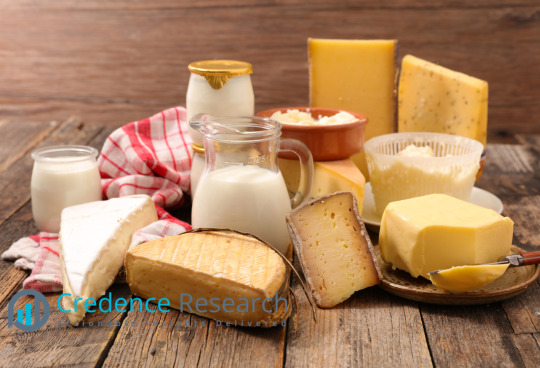
The global demand for Dairy Ingredients was valued at USD 69815.2 Million in 2023 and is expected to reach USD 131627.7 Million in 2032, growing at a CAGR of 7.30% between 2024 and 2032.
The dairy ingredients market encompasses the production, distribution, and utilization of ingredients derived from milk and dairy products. These ingredients include milk powders, whey proteins, casein, lactose, and other dairy-based components. They are widely used in various applications such as food and beverages, infant formula, dietary supplements, and animal feed. The market is driven by the increasing demand for high-protein and nutrient-rich foods, the rising consumption of functional foods and beverages, and the growing popularity of convenience foods. Additionally, advancements in processing technologies and innovations in dairy ingredient formulations are contributing to market growth. However, challenges such as fluctuating milk prices, lactose intolerance among consumers, and the demand for plant-based alternatives can impact the market dynamics. The dairy ingredients market is characterized by significant regional variations, with major production centers in North America, Europe, and Oceania, and emerging markets in Asia-Pacific and Latin America.
Types of Dairy Ingredients
Milk Powders:
Skim Milk Powder: Contains minimal fat and is used in various food and beverage applications.
Whole Milk Powder: Contains higher fat content and is used in products where a richer taste is desired.
Milk Protein Concentrate (MPC): High in protein, used in nutritional products and food fortification.
Whey Products:
Whey Protein Concentrate (WPC): Contains varying protein levels, used in sports nutrition, bakery, and dairy products.
Whey Protein Isolate (WPI): Higher protein content with minimal fat and lactose, used in high-protein foods and supplements.
Whey Powder: A versatile ingredient used in bakery, confectionery, and dairy products.
Casein and Caseinates:
Casein Protein: Slow-digesting protein used in nutritional supplements and food products.
Calcium Caseinate: Used in nutritional supplements, beverages, and bakery products.
Sodium Caseinate: Functions as an emulsifier and stabilizer in various food products.
Lactose:
Lactose Powder: Used as a sweetener, bulking agent, and in pharmaceuticals.
Butter and Ghee:
Butter: Used in bakery, confectionery, and culinary applications.
Ghee: Clarified butter used in cooking, especially in South Asian cuisine.
Cream and Cheese Powders:
Cream Powder: Used to impart creaminess in soups, sauces, and bakery products.
Cheese Powder: Adds cheese flavor to snacks, sauces, and ready meals.
Milk Proteins:
Micellar Casein: Native casein used in sports nutrition for its slow digestion properties.
Milk Protein Isolate (MPI): Contains both casein and whey proteins, used in nutritional products.
Anhydrous Milk Fat (AMF):
Used in bakery, confectionery, and dairy products for flavor and texture enhancement.
Cultured Dairy Ingredients:
Yogurt Powder: Used in snacks, bakery products, and beverages.
Cultured Buttermilk Powder: Used in bakery and snack foods for a tangy flavor.
Dairy-Based Flavors:
Butter Flavors: Used to enhance the taste of various food products.
Cheese Flavors: Adds specific cheese notes to snacks, sauces, and processed foods.
Applications:
Food and Beverages: Used in bakery products, confectioneries, beverages, and dairy products.
Infant Formula: Essential components in baby foods and formulas.
Dietary Supplements: Used in protein powders, health drinks, and nutritional bars.
Animal Feed: Ingredients for livestock nutrition.
Pharmaceuticals: Lactose used as an excipient in drug formulations.
Nutritional Benefits:
High in protein and essential amino acids.
Rich source of calcium, vitamins, and minerals.
Provides functional properties like emulsification, water binding, and foaming.
Dairy Ingredients Market Dynamics:
Market Restraints:
Lactose Intolerance and Dairy Allergies: A significant portion of the global population is lactose intolerant or allergic to dairy, which limits the consumption of dairy-based products.
Fluctuating Raw Material Prices: Volatility in milk prices can impact the cost and profitability of producing dairy ingredients.
Competition from Plant-Based Alternatives: Growing popularity of plant-based and alternative protein sources, such as soy, almond, and oat, which are perceived as healthier or more sustainable by some consumers.
Environmental and Ethical Concerns: Concerns over the environmental impact of dairy farming, including greenhouse gas emissions, water usage, and animal welfare issues.
Opportunities:
Innovation in Product Development: Development of new dairy-based ingredients and formulations to cater to specific dietary needs and health trends, such as lactose-free, low-fat, and fortified products.
Expansion in Emerging Markets: Growth opportunities in emerging markets like Asia-Pacific, Latin America, and Africa, where dairy consumption is increasing due to rising incomes and urbanization.
Sustainable and Ethical Production Practices: Increasing demand for sustainably sourced and ethically produced dairy ingredients, presenting opportunities for companies that adopt environmentally friendly and animal welfare practices.
E-commerce and Direct-to-Consumer Sales: Expanding online sales channels for dairy ingredients and related products, making it easier for consumers to access a wider variety of products.
Challenges:
Regulatory Compliance: Navigating complex and varying regulations across different regions related to food safety, labeling, and nutritional claims.
Supply Chain Disruptions: Vulnerability to supply chain disruptions, which can affect the availability and cost of raw materials and finished products.
Market Saturation in Developed Regions: Slower growth in mature markets like North America and Europe, where dairy consumption levels are already high.
Consumer Perception and Misinformation: Addressing consumer misconceptions and misinformationabout dairy products, including health concerns and environmental impacts.
Key Players-
Nestle S.A.
Schreiber Foods Inc.
Savencia S.A.
Glanbia PLC.
Gujarat Cooperative Milk Marketing Federation Ltd.
Fonterra Cooperative Group
Royal FrieslandCampina N.V.
Arla Foods
Lactalis Group
Dairy Farmers of America Inc
Agropur Cooperative
More About Report- https://www.credenceresearch.com/report/dairy-ingredients-market
Dairy ingredients are essential components in a wide variety of food products, providing numerous functional and nutritional benefits. These ingredients, which include milk powder, whey protein, casein, lactose, and various dairy fats, are used extensively in the food industry to enhance flavor, texture, and nutritional content. In baking, for example, milk powder and whey protein improve the texture and moisture retention of baked goods, resulting in softer breads and cakes. Dairy fats, such as butter and cream, add richness and flavor to pastries, sauces, and confections.
In the production of dairy products like cheese and yogurt, milk proteins such as casein and whey are crucial for achieving the desired consistency and taste. These proteins also play a significant role in the nutritional profile of these products, offering high-quality protein that is easily digestible and rich in essential amino acids. In the beverage industry, dairy ingredients are used to fortify nutritional drinks and smoothies, enhancing their protein content and providing a creamy texture.
Dairy ingredients are also prominent in the manufacturing of processed foods. They act as emulsifiers, stabilizers, and thickeners, improving the shelf life and quality of products like soups, sauces, and ready-to-eat meals. In confectionery, lactose is used as a sweetener and filler, contributing to the texture and sweetness of chocolates and candies. Additionally, in the sports nutrition sector, dairy-derived whey protein is a popular supplement due to its excellent amino acid profile and ability to support muscle growth and recovery.
Segmentation-
By Type of Dairy Ingredients:
Milk Powder
Whey Protein
Casein and Caseinates
Lactose
Butter and Ghee
Cheese and Cheese Powders
Milk Proteins
Yogurt and Yogurt Powders
By Application:
Dairy Products
Bakery and Confectionery
Beverages
Processed Foods
Nutritional Supplements
Infant Formula
Dietary and Functional Foods
By Functionality:
Proteins
Fat Replacement
Emulsification
Texture Enhancement
Flavor Enhancement
Nutrient Enrichment
Natural Colorants
Browse the full report – https://www.credenceresearch.com/report/dairy-ingredients-market
Browse Our Blog: https://www.linkedin.com/pulse/dairy-ingredients-market-key-industry-dynamics-analysis-altubina-09mcf
Contact Us:
Phone: +91 6232 49 3207
Email: [email protected]
Website: https://www.credenceresearch.com
0 notes
Text
Baby Bottle Warmer Market Unidentified Segments – The Biggest Opportunity Of 2024
A device which is used for warming the milk and infant or baby formula in a baby's bottle, at the correct temperature for feeding, is basically considered as a baby bottle warmer. Baby bottle warmers are especially been used for heating expressed breastmilk milk at a temperature which is appropriate. Vendors are focusing focus on innovation in the technology and also on the portfolio expansion, which leads to premiumization of product. Therefore, vendors are innovating their product offerings by incorporating the advanced technologies, to gain total market share. Among that smart connectivity is one of the latest technologies which are incorporated in baby bottle sterilizers, so that it can be easily connected to tablets or smartphones using the wireless technology such as Bluetooth, that can send alerts and monitor and control the bottle warmers from anywhere.
Free Sample Report + All Related Graphs & Charts @: https://www.advancemarketanalytics.com/sample-report/112551-global-baby-bottle-warmer-market?utm_source=Organic&utm_medium=Vinay
Latest released the research study on Global Baby Bottle Warmer Market, offers a detailed overview of the factors influencing the global business scope. Baby Bottle Warmer Market research report shows the latest market insights, current situation analysis with upcoming trends and breakdown of the products and services. The report provides key statistics on the market status, size, share, growth factors of the Baby Bottle Warmer The study covers emerging player’s data, including: competitive landscape, sales, revenue and global market share of top manufacturers are Arstana (Italy), BABY BREZZA (United States), Cuisinart (United States), Koninklijke Philips (Netherlands), Munchkin (United States), Chicco (Italy), Dr, Browns (United States), Mayborn Group (United Kingdom)
Thanks for reading this article; you can also get individual chapter wise section or region wise report version like North America, Europe or Southeast Asia.
0 notes
Text
Crafting Nourishment Through Malted Milk Food Manufacturing
Malted milk food manufacturing is a food production company that embodies tradition and innovation. It uses the rich history of malted grains to make mouth-watering goods that appeal to consumers all over the world. This approach fundamentally combines science and art to produce nourishment that goes beyond simple sustenance. Let us examine the complex procedure and significant significance of manufacturing malted milk foods, where each stage has meaning and potential.
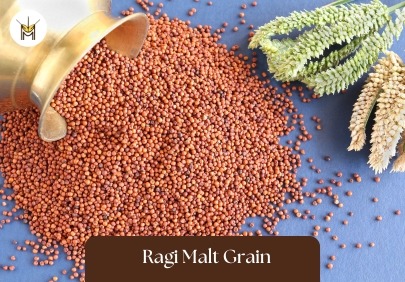
Malt products manufacturing process
Extraction of malt essence is the vital process of malt extract contract manufacturing, so it is poured into meticulous work and experienced handwork. Malt extract which is derived from barley and other grains acts as an essential ingredient, offering beverages a suave flavour and health potential. Through a malt extract contract manufacturing suppliers draw from specialized manufacturing plants where the new malt is turned into malt extracts, using the required standards and observing quality.
This step involves soaking grains in water, germination through malting, and the kilning process, formulating extraction strategies preceded by extraction methodologies that are inclined to recover the targeted flavours and nutrients. This malt extract derives its robust taste from malt and makes milky products such as beverages, candies and even bars possible.
How important is the manufacturing of malt products considered?
Cereal grains with malted milk supply the body with important nutrients producing a unique mixture of carbohydrates and proteins, vitamins and minerals. Arguably the most important thing about these products being a source of constant energy is the fact that the balanced nutritional profile they offer is mandatory for a healthy life.

It is worth mentioning that malted milk fills up the supplements the diet with all essential nutrients and that is why it stands out as an excellent food for children, athletes and the elderly. On the other hand, malted milk is a beneficial food which is easily digested, and well absorbed having a lot of body taking necessities without any loss of taste.
The flexibility of malted milk foods, on the other hand, is highly dimensional and even extends beyond the boundaries of culinary art, with its appeal in every eating and drinking landscape alike. From creamy malted milkshakes to delicious malted chocolate bars, the variety of foods just as much as its mouth-watering features are too many to mention.
Malted milk is the spectrum of consumer products, discovering room for use in industries like bakery, infant formulas, and nutritional supplements. As a fundamental tool for creating new dishes - malted milk provides chefs and malted milk foods third-party manufacturers with ways to give their indulgent creations a special touch which in turn converses with the client's fancy, consequently developing quality culinary experiences and consequently confers the market niche.
Conclusion
Malted milk food manufacturing produces goods that go beyond the ordinary and into the remarkable, exemplifying the harmonious union of tradition with advancement. One sip or bite at a time, producers enhance lives by adding a magical touch to each product through painstaking methods and unrelenting dedication.
For more information about: malt extract Powder Please visit at https://www.mahalaxmimaltextract.com/
#barley malt powder#malt extract powder#malted barley powder manufacturers#liquid malt extract#barley malt extract#malt extract liquid#barley malt extract manufacturers#malt extract#malt extract powder manufacturer
0 notes
Text
Lactose Free Food Market will grow at highest pace owing to increasing incidences of lactose intolerance

The lactose free food market consists of various dairy and food products that do not contain lactose. These include milk, cheese, yogurt, ice cream, infant formula, and other food items. The growing prevalence of lactose intolerance around the world is fueling demand for lactose free dairy and food products. According to statistics, around 68% of the world's population has a reduced ability to digest lactose after infancy. Lactose intolerance causes symptoms like bloating, cramps, and diarrhea upon consuming dairy products that contain lactose. To avoid such discomfort, individuals are increasingly opting for lactose free food options.
The Global Lactose Free Food Market Size is estimated to be valued at US$ 18.73 Bn in 2024 and is expected to exhibit a CAGR of 4.5% over the forecast period 2024 to 2031.
Key Takeaways
Key players operating in the lactose free food market are Cargill, Inc., Galaxy Nutritional Foods, Inc., Green Valley Organics, Edlong Dairy Technologies, Parmalat SpA, Valio Ltd., Alpro, OMIRA Oberland-Milchverwertung, Crowley Foods, Arla Foods., Danone SA, General Mills Inc., Fonterra Co-operative Group Limited, Kerry Group PLC, Emmi AG, WhiteWave Foods, Barry Callebaut AG, HP Hood LLC, Valio Ltd, and Daiya Foods Inc. The demand for lactose free dairy products like milk, cheese, and yogurt is increasing rapidly due to the growing health-conscious consumer base. Technological advancements are helping lactose free food producers develop innovative dairy and non-dairy alternatives that closely resemble the taste and texture of regular dairy products.
Get More Insights On This Topic: Lactose Free Food Market
#Lactose-Free Food Market#Dairy Alternatives#Food Allergies#Digestive Health#Plant-Based#Nutritional Supplements#Dairy-Free Diet#Health-conscious Consumers
0 notes
Text
Baby Health Care
Inviting a newborn right into the globe is both an exciting and frustrating experience for parents. As a parent, guaranteeing the health and wellness of your baby is a leading concern. Newborn healthcare entails a range of techniques and procedures targeted at promoting the total health of your little one. From normal examinations to creating a safe atmosphere in your home, there are several steps you can take to ensure your child gets off to a healthy beginning in life.
One of the most essential elements of newborn healthcare is making certain your infant gets appropriate clinical attention. This includes scheduling routine well-baby visits with a pediatrician, who will check your infant's development and growth, administer injections, and resolve any type of wellness worries. These brows through are not just essential for tracking your child's physical health and wellness but likewise provide a chance for you to ask inquiries and seek support on taking care of your newborn.
In addition to treatment, offering a risk-free and caring environment is vital for newborn health and wellness. This consists of developing a safe sleep atmosphere by positioning your infant on their back to sleep, using a firm bed mattress with a fitted sheet, and preventing soft bed linens, coverings, or toys in the baby crib. It's also vital to keep a smoke-free environment and ensure your baby is protected from previously owned smoke, as direct exposure to smoke boosts the danger of Abrupt Baby Fatality Disorder (SIDS).
Feeding is one more important facet of newborn health care. Whether you choose to breastfeed or formula-feed your infant, guaranteeing they are obtaining appropriate nourishment is important for their growth and advancement. Breast milk provides essential nutrients and antibodies that can help shield your infant from infections and diseases. If you have problems regarding feeding or your child's weight gain, consult with a lactation expert or a doctor for assistance.
As your infant grows, proper hygiene techniques also play a substantial duty in newborn healthcare. This includes bathing your infant routinely, cleaning their umbilical cord stump till it falls off, and keeping their baby diaper location tidy and dry to stop breakouts and infections. Appropriate handwashing before managing your infant and limiting site visitors during the early weeks can help reduce the threat of infections.
In conclusion, newborn healthcare incorporates a variety of practices and routines targeted at advertising the wellness of your infant. By focusing on normal medical check-ups, supplying a risk-free setting, making certain proper nourishment, and exercising excellent health, you can assist set the foundation for a healthy and balanced and flourishing future for your newborn.
1 note
·
View note
Text
Health Benefits of Aptamil (Baby formula)
Aptamil is a well-known brand of infant formula, and it offers several health benefits for babies. Let's explore some of these benefits:
Advanced Prebiotic Oligosaccharides: Aptamil formulas contain a unique blend of prebiotic oligosaccharides, including a 9:1 ratio of galacto-oligosaccharides (GOS) to fructo-oligosaccharides (FOS). These prebiotics help support a healthy gut microbiota, bringing it closer to that of breastfed infants¹.
Nutrient-Rich Composition: Aptamil formulas are enriched with essential nutrients, including proteins, carbohydrates, fats, vitamins, and minerals. These components provide a balanced and complete source of nutrition, supporting optimal growth, cognitive development, and overall well-being in infants³.
Vital Nutrients for Brain and Visual Development: Aptamil formulas contain crucial nutrients such as DHA (docosahexaenoic acid) and ARA (arachidonic acid). These play a significant role in brain and visual development².
Immune System Support: Aptamil formulas are designed to support the development of a robust immune system in infants¹. This is essential for overall health and protection against infections.
Remember that while formula milk provides essential nutrition, breastfeeding remains the gold standard for infant health. Breast milk contains a complex mix of bioactive ingredients, including prebiotic oligosaccharides, stem cells, immuno-ingredients, growth factors, and more¹. Always consult with healthcare professionals to make informed decisions based on your baby's individual needs. 🍼👶
For details Visit:
0 notes
Text
Area code the Mysteries regarding Human Milk Oligosaccharides
Breast milk is generally proclaimed nature's excellent food for babies, providing essential vitamins, antibodies, plus a countless of bioactive ingredients crucial for a new baby's growth and development. Among these compounds, human whole milk oligosaccharides (HMOs) jump out as fascinating elements with a bunch of benefits. Why don't embark on a new journey to reveal the wonders associated with human milk oligosaccharides.
What are Human Milk Oligosaccharides?
Individual milk oligosaccharides, or HMOs, are intricate sugars that are usually abundant in human chest milk. While they are not digestible by infants, that they play an essential role in shaping the newborn gut microbiome and providing some sort of myriad of health advantages.
The Role of HMOs in Baby Health
HMOs act as prebiotics, nourishing beneficial bacteria in the particular infant gut when inhibiting the growth of harmful pathogens. This prebiotic impact helps establish a healthy gut microbiome, which is crucial for immune development and overall health.
Safety Effects of HMOs
Studies have shown of which HMOs have different protective effects towards infections, including lowering the risk involving diarrhea and respiratory infections in children. Additionally , certain HMOs happen to be found to inhibit the aprobacion of pathogens in order to the intestinal filling, further enhancing their particular protective role.
HMOs and Brain Advancement
Recent studies have recommended that HMOs may well also play a role in cognitive development. Some HMOs have been proven to promote the development of specific bacterias in the gut, which can produce metabolites that support mind development and function.
Typically the Unique Composition associated with HMOs
One regarding the remarkable elements of HMOs will be their structural diversity. Unlike other mammals, humans produce a wide range of HMOs, along with hundreds of different structures identified so far. This diversity is thought to add to the wide variety of benefits connected with breast dairy.
HMOs Beyond Infancy
While HMOs are really most abundant found in breast milk, their particular benefits extend further than infancy. Research suggests that HMOs may experience potential applications found in the advancement newborn formula, probiotics, in addition to even therapeutic concours for various health problems.
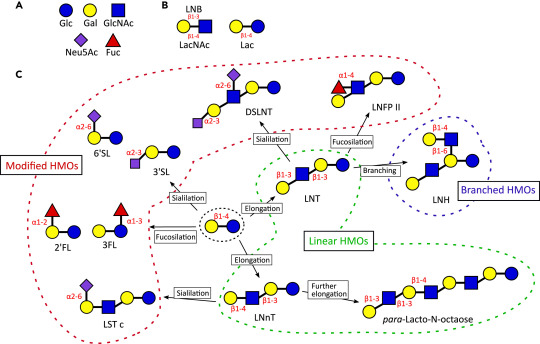
Unlocking the Possible of HMOs
Individuals milk oligosaccharides represent a fascinating portion of research with enormous potential for improving infant health in addition to beyond. As researchers continue to unravel the complexities of these molecules, we gain a deeper comprehension of the unique advantages they provide. Whether by https://builtbybeauty.com/130-reasons-to-use-human-milk-oligosaccharides of breastfeeding or modern scientific advancements, taking the power of HMOs keeps promise for boosting human health and even well-being from the extremely beginning of life.
1 note
·
View note
Text
Importance of iron fortified food during pregnancy
Iron deficiency is among the most common nutritional deficiencies globally, and it affects more than 20% of the world’s population, as iron imparts an important role in the formation of blood.
Iron deficiency often leads to anemia which is defined as having a blood hemoglobin (Hb) level below standard which usually results due to insufficient dietary intake of iron, poor utilization of iron from ingested food, or combination of both.
Human body doesn’t naturally make iron. Iron can only be obtained through diet or through supplements. That’s why increasing of iron-rich foods intake in pregnant woman can be important, especially during pregnancy.
When woman is pregnant, they need about twice the amount of iron because woman body uses iron to make extra blood for baby. And yet, about 50% of pregnant women don’t get enough of this important mineral.
Why is iron important during pregnancy?
Iron is essential during pregnancy and lactation.
It gives stamina to the mother, and is essential in proper brain development and blood cell formation for the baby.
Pregnancy increases woman blood supply by up to 50 percent. That’s where iron comes in. Iron is used by the body to make red blood cells. An increase in blood supply means that you’ll need more red blood cells and more iron to make those blood cells.
Also, it helps in treating and preventing iron deficiency anemia. Hence, incorporating iron-rich foods in your diet is extremely important for a healthy pregnancy and baby.
Iron rich foods can either be vegetarian or non-vegetarian based.
Low iron may make a pregnant person feel tired, have headaches, get dizzy, feel weak, or have shortness of breath. These are often things that a pregnant person may experience at some point in their pregnancy anyway, so all pregnant people have their iron levels tested regardless of symptoms.
There are two types of iron:
Iron from animal foods called Heme iron (Non-vegetarian source)
Iron from plant foods called Non-heme iron (Vegetarian source)
Vegetarian sources of iron include:
Fortified Cereals
Green leafy vegetables – e.g., spinach, methi (fenugreek)
Dried seeds and nuts
Whole grains
Pulses and beans – e.g., lentils, peas, soy, kidney bean
Fruits – e.g., figs, dates, apples, raisins (dried fruits)
Non-vegetarian sources of iron include:
Poultry – chicken breasts, chicken drumsticks
Seafood – canned tuna, mackerel, trout, bass
Eggs
Meat
Titus Health Tech Pvt Ltd is one of the leading names when it comes to manufacturing of world class, technologically advanced infant milk formula and other nutritional supplements.
Our ProShake Mom, a nutrition drink for pregnant women by Titus health tech is a simple solution to meet the increased nutritional needs of pregnant or nursing (lactating) mothers. A perfect complement to your healthy diet with its complete balanced nutrition packed with protein, vitamins, minerals and other essential nutrients. It also helps provide the extra nutrition and energy to help you care for your new-born. It provides the energy, protein and calcium needs of a pregnant or breast-feeding mother.
Get in touch with us at +91 97277 53866 or send an email on [email protected] for any query related to our nutrition products.
Note: Titus is most trusted nutrition products and private label nutrition manufacturer in India. The company manufactures and markets infant milk formulas, baby cereals, pregnancy nutrition, nutrition for kids and toddlers, and other specialty products including sports nutrition and diabetic nutrition.
#titus heath tech#titus#Importance of iron fortified food during pregnancy#advanced infant milk formula#nutritional supplements#ProShake Mom#nutrition drink for pregnant women#most trusted nutrition products#private label nutrition manufacturer#infant milk formulas#baby cereals#pregnancy nutrition#nutrition for kids#sports nutrition#diabetic nutrition#nutrition products
0 notes
Text
Bovine Alpha-Lactalbumin, Global Market Size Forecast, Top 6 Players Rank and Market Share
Bovine Alpha-Lactalbumin Market Summary
According to the new market research report "Global Bovine Alpha-Lactalbumin Market Report 2023-2029", published by QYResearch, the global Bovine Alpha-Lactalbumin market size is projected to grow from USD 43 million in 2023 to USD 113 million by 2029, at a CAGR of 17.6% during the forecast period.
Bovine alpha-lactalbumin (English name: Alpha-lactalbumin) is a form of whey protein that is mainly found in dairy products, especially milk. It is a high-quality protein that is generally rich in amino acids, especially lysine, tryptophan, and cysteine.
The main role of bovine alpha-lactalbumin in milk is to participate in the synthesis of lactose together with lactose synthase. Lactose, the main sugar in milk, helps produce lactose by working with bovine alpha-lactalbumin. In addition, bovine α-lactalbumin also contains a certain amount of antimicrobial peptides, which have a certain inhibitory effect on bacteria and help maintain infant intestinal health.
In addition to its physiological functions, bovine alpha-lactalbumin is also considered a high-quality protein source due to its high-quality amino acid composition, which is beneficial to human nutrition and health. Therefore, it is often used in food and health product manufacturing to provide a high-quality protein supply.
Figure. Bovine Alpha-Lactalbumin
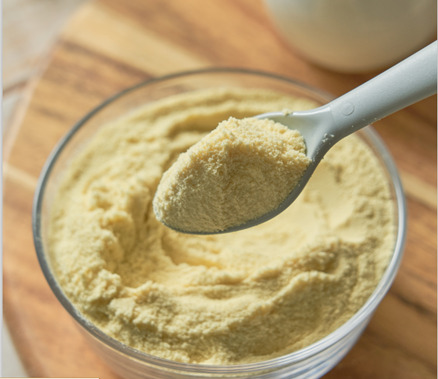
Figure. Global Bovine Alpha-Lactalbumin Market Size (US$ Million), 2018-2029

Based on or includes research from QYResearch: Global Bovine Alpha-Lactalbumin Market Report 2023-2029.
Market Drivers:
Increased protein needs: As the demand for high-protein diets increases, bovine alpha-lactalbumin becomes even more important as a high-quality protein source. The increasing demand for protein among athletes, fitness enthusiasts and some special groups has driven the market demand for bovine alpha-lactalbumin and other whey protein derivatives.
Increased health awareness: People are increasingly paying attention to health and nutrition, and they pay more attention to the quality and functionality of ingredients in food. Bovine alpha-lactalbumin is increasingly popular for its antioxidant, immune support and muscle repair health benefits.
Technological Advances: Continuous advances in biotechnology and food processing technology have made the extraction and purification of bovine alpha-lactalbumin more efficient and economical. These technological developments have made it easier for manufacturers to produce bovine alpha-lactalbumin on a large scale for use in a variety of food and health products.
Food Innovation: The food industry is constantly innovating, looking for new ingredients and functional foods. As a functional ingredient, bovine alpha-lactalbumin is widely used in dairy products, protein drinks, energy bars, infant formula and other products to provide more product choices.
Nutritional Research: Scientific research continues to uncover the health benefits of bovine alpha-lactalbumin, including its positive effects in immune system support, gut health, and cardiovascular health. These findings have prompted greater attention and acceptance of the application of this protein.
Restraint:
Supply Constraints: Production of bovine alpha-lactalbumin is limited by milk supply. Therefore, insufficient supply may limit its market supply and scale expansion.
Cost Concern: The process of extracting and purifying bovine alpha-lactalbumin can be expensive, especially when produced on a large scale. This can result in a high-cost product, making it less competitive in the market.
Technical Challenges: Although there have been some advances, the technology for extracting and purifying bovine alpha-lactalbumin remains challenging, particularly for efficient large-scale production while maintaining its biological activity. Addressing these technical issues may require more research and investment.
Market competition: The whey protein market is highly competitive, and there are many different types of whey protein products to choose from, including whey protein concentrate, whey protein isolate, etc. Therefore, bovine alpha-lactalbumin needs to compete with other products and establish its own market share.
Regulatory and safety issues: The food industry is regulated and needs to meet a range of regulatory and safety standards when it comes to new food ingredients or additives. Therefore, rigorous security assessment and compliance testing are required, which may increase the time and cost of development and marketing.
Consumer Acceptance: Although studies have shown that bovine alpha-lactalbumin has multiple health benefits, its awareness and acceptance among the average consumer is relatively low. Therefore, more resources may need to be invested in marketing and education.
Opportunity:
High-Protein Diet Trend: As the demand for high-protein diets continues to increase, bovine alpha-lactalbumin can serve as a source of high-quality protein to meet the needs of fitness enthusiasts, athletes and people seeking high-protein diets.
Infant formula: Bovine alpha-lactalbumin is rich in lysine, which is important for infant growth and development. Therefore, its use in infant formula has potential to provide nutrition more similar to breast milk.
Immune Support: Bovine alpha-lactalbumin contains some bioactive components with immune-supportive effects, making it potentially useful in the field of immune modulation. It can be used to develop immune-boosting products.
Nutritional supplements: Bovine alpha-lactalbumin can be added to protein powders, energy bars, dietary supplements and other products to provide high-quality protein supplements and meet the protein needs of different groups of people.
Personalized Nutrition: With the rise of personalized nutrition, bovine alpha-lactalbumin can be customized to meet individual health needs and goals to meet the specific needs of different people.
Healthy and functional foods: Bovine α-lactalbumin is considered to have antioxidant, antibacterial and other health benefits and can be used to develop a variety of healthy and functional foods, such as beverages, yogurt, oatmeal, etc.
Market education and promotion: Through broader market education and promotion on the health benefits and application areas of bovine alpha-lactalbumin, consumer awareness and acceptance can be improved and market growth can be promoted.
Figure. Bovine Alpha-Lactalbumin, Global Market Size, The Top Five Players Hold 79.4% of Overall Market

Based on or includes research from QYResearch: Global Bovine Alpha-Lactalbumin Market Report 2023-2029.
This report profiles key players of Bovine Alpha-Lactalbumin such as Agropur、Friesland Campina Ingredients、Arla Foods Ingredients、Armor Proteines、Hilmar Cheese Company In 2022, the global top five Bovine Alpha-Lactalbumin players account for 79.4% of market share in terms of revenue. Above figure shows the key players ranked by revenue in Bovine Alpha-Lactalbumin.
Figure. Bovine Alpha-Lactalbumin, Global Market Size, Split by Product Segment
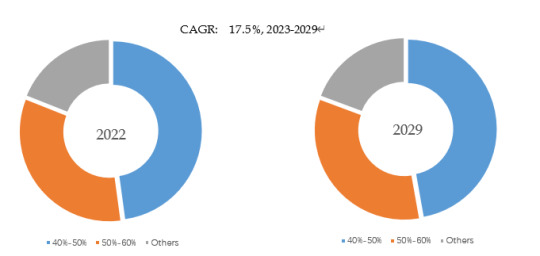

Based on or includes research from QYResearch: Global Bovine Alpha-Lactalbumin Market Report 2023-2029.
In terms of product type, 40%-50% is the largest segment, hold a share of 48%.
Figure. Bovine Alpha-Lactalbumin, Global Market Size, Split by Application Segment


Based on or includes research from QYResearch: Global Bovine Alpha-Lactalbumin Market Report 2023-2029.
In terms of product application, Baby Nutrition is the largest application, hold a share of 85%.
Figure. Bovine Alpha-Lactalbumin, Global Market Size, Split by Region (Production)


Based on or includes research from QYResearch: Global Bovine Alpha-Lactalbumin Market Report 2023-2029.
Figure. Bovine Alpha-Lactalbumin, Global Market Size, Split by Region


Based on or includes research from QYResearch: Global Bovine Alpha-Lactalbumin Market Report 2023-2029.
About The Authors
Ziyi Fan
Lead Author
Consumer Goods,
Equipment & Parts, Packaging, etc.
About QYResearch
QYResearch founded in California, USA in 2007.It is a leading global market research and consulting company. With over 16 years’ experience and professional research team in various cities over the world QY Research focuses on management consulting, database and seminar services, IPO consulting, industry chain research and customized research to help our clients in providing non-linear revenue model and make them successful. We are globally recognized for our expansive portfolio of services, good corporate citizenship, and our strong commitment to sustainability. Up to now, we have cooperated with more than 60,000 clients across five continents. Let’s work closely with you and build a bold and better future.
QYResearch is a world-renowned large-scale consulting company. The industry covers various high-tech industry chain market segments, spanning the semiconductor industry chain (semiconductor equipment and parts, semiconductor materials, ICs, Foundry, packaging and testing, discrete devices, sensors, optoelectronic devices), photovoltaic industry chain (equipment, cells, modules, auxiliary material brackets, inverters, power station terminals), new energy automobile industry chain (batteries and materials, auto parts, batteries, motors, electronic control, automotive semiconductors, etc.), communication industry chain (communication system equipment, terminal equipment, electronic components, RF front-end, optical modules, 4G/5G/6G, broadband, IoT, digital economy, AI), advanced materials industry Chain (metal materials, polymer materials, ceramic materials, nano materials, etc.), machinery manufacturing industry chain (CNC machine tools, construction machinery, electrical machinery, 3C automation, industrial robots, lasers, industrial control, drones), food, beverages and pharmaceuticals, medical equipment, agriculture, etc.
0 notes
Text
Supplements are having a moment
A 2022 survey of more than 3,100 U.S. adults indicated that 75 percent take some form of nutritional supplement. Of those consumers, 52 percent said they took a specialty supplement, like omega-3s, probiotics, or fiber.
Johna Burdeos, RD, a registered dietitian, says a myriad of factors have contributed to the popularity of supplements, vitamins, and minerals, including the pandemic and ease of purchasing supplements online from retailers.
Still, supplements aren’t without their detractors. The industry isn’t regulated by the U.S. Food & Drug Administration (FDA).
Plus, you may wonder whether you need dietary supplements if you’re eating a well-balanced diet.
Here’s what the research and experts have to say about when it’s beneficial to add vitamins, minerals, and supplements to your diet, plus which ones to choose.
The subject is up for debate, even among experts.
“Supplements are not usually the only possible solution for most adults to achieve and maintain good health,” says Maddie Pasquariello, MS, RDN. “In fact, for many of those experiencing health problems, supplements are not usually the first line of defense that dieticians will turn to.”
Other lifestyle tweaks, like changes to diet and exercise recommendations, typically come first.
That said, supplements are recommended as a standard in some cases. In other cases, they may help fill in the gaps for nutrient deficiencies in the diet, says Stephanie Greunke, RD, a registered dietician and member of Needed‘s practitioner collective.
Common cases where providers will recommend taking vitamins, supplements, or minerals include:
pregnancy
lactation
infants receiving human milk or less than 32 oz. per day of formula
health improvement
special diets
deficiencies
Supplements may have their detractors, but some can be beneficial, particularly in specific circumstances.
Prenatal vitamin
The American College of Obstetricians and Gynecologists recommends people with uteruses should begin taking prenatal vitamins when they start trying to become pregnant and continue intake throughout pregnancy. Burdeos recommends starting three months in advance of your first attempt to become pregnant.
The CDC recommendsTrusted Source taking prenatal vitamins with 400 mg of folic acid to protect against certain birth defects.
The ACOG recommends getting at least 27 milligrams of iron per day during pregnancy, something often found in prenatal vitamins.
Burdeos says folic acid combined with iron provides benefits for a fetus.
“Folic acid helps prevent neural tube defects, which are serious abnormalities in the baby’s brain and spinal cord,” Burdeos says. “Iron helps facilitate the transportation of oxygen throughout the body. Iron helps support the proper development of the baby and the placenta.”
According to Maddie Pasquariello, MS, RDN, supplements are not typically the sole solution for most adults to achieve and maintain good health. In fact, when individuals face health issues, dieticians usually explore other lifestyle adjustments, such as diet and exercise modifications, before considering supplements as a primary intervention.
However, there are instances where supplements are recommended as a standard approach. Additionally, they can also be beneficial in addressing nutrient deficiencies in the diet, as suggested by Stephanie Greunke, RD, a registered dietician and member of Needed's practitioner collective.

0 notes
Text
Global Milk Protein Concentrate Market Forecast: Assessing Demand, Supply Chain Dynamics, and Competitive Landscape
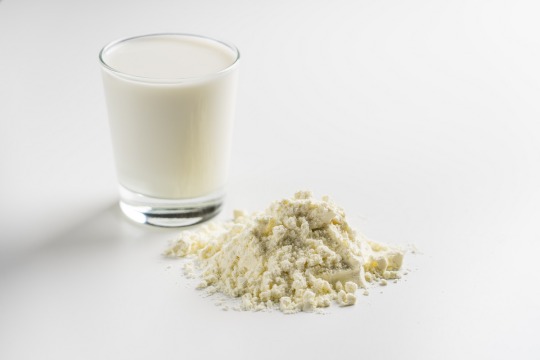
Definition: Milk protein concentrate (MPC) refers to a concentrated form of milk protein that is derived by removing a certain proportion of the non-protein constituents from skim milk. The concentration process involves ultrafiltration or other separation techniques, resulting in a product with higher protein content than regular milk. MPC is widely used in the food industry for its functional properties and nutritional benefits.
Market Overview & Scope: The milk protein concentrate market has experienced substantial growth in recent years, driven by the increasing demand for protein-rich ingredients in the food and beverage industry. The versatility of MPC in various applications, including dairy products, sports nutrition, infant formula, and bakery goods, has contributed to its widespread adoption. As consumer awareness of the health benefits associated with protein consumption rises, the market scope for milk protein concentrate continues to expand globally.
Market Growth: The market for milk protein concentrate is witnessing robust growth, propelled by factors such as changing dietary patterns, a growing health-conscious population, and the rising awareness of the nutritional value of protein. The versatility of MPC in product formulations, offering improved texture, enhanced nutritional content, and extended shelf life, has fueled its demand among manufacturers. Additionally, the increasing adoption of MPC as a functional ingredient in sports and nutritional supplements has further accelerated market growth.
Market Industry: The milk protein concentrate industry encompasses a diverse range of players, including dairy product manufacturers, ingredient suppliers, and food and beverage companies. Key industry participants are focusing on strategic collaborations, product innovations, and capacity expansions to strengthen their market presence. As the demand for protein-rich products continues to surge, the industry is witnessing investments in research and development to explore new applications and improve the overall quality of milk protein concentrates.
Trends: Several milk protein concentrate market trends are shaping the global industry. One prominent trend is the growing preference for clean-label and natural products, leading to the development of minimally processed and organic milk protein concentrates. Additionally, advancements in processing technologies and the introduction of value-added variants, such as functional MPC with added vitamins and minerals, are gaining traction. Furthermore, sustainability and ethical sourcing practices are emerging as key considerations for both consumers and industry players, influencing the production and marketing strategies within the milk protein concentrate market.
#Milk Protein Concentrate Market#Milk Protein Concentrate Market Growth#Milk Protein Concentrate Market Trends
0 notes
Text
Global Milk Protein Hydrolysate Market – Notable Developments, Upcoming Trends & Future Applications 2032
The global Milk Protein Hydrolysate Market is experiencing substantial growth due to increasing awareness of the health benefits associated with it. Milk protein hydrolysate is a specialized form of milk protein, obtained through enzymatic hydrolysis, breaking down large protein molecules into smaller peptides. These peptides are easier to digest and offer a higher nutritional value, making them suitable for infant formulas, sports nutrition, and clinical nutrition applications.
According to the recent FMI report, the sales for milk protein hydrolysate are expected to cross a value of USD 1.6 Bn in 2032, significantly rising at a CAGR of 6.9% in the time period of 2032.
By 2027, the market for milk protein hydrolysate in sports nutrition applications is expected to exceed USD 0.4 Bn. Sports nutrition products are made up of various types of nutritional food in specified amounts that aid in improving performance and sustaining body energy levels.
Dive into the dynamic world of the Milk Powder Market with our exclusive Sample report. Get ready to make informed decisions and seize opportunities! https://www.futuremarketinsights.com/reports/sample/rep-gb-14905
Key Takeaways from the Milk Protein Hydrolysate Market Study:
During the projection period, demand for whey protein hydrolysate in the US is expected to increase by approximately 5.1%. Consumers are paying greater attention to protein-rich products in order to maintain an overall health balance, which is fuelling the expansion of the milk protein hydrolysate sector.
According to FMI analysis, by the end of 2027, the poultry animal feed segment is expected to generate over USD 13.6 Bn in sales. Demand for nutritional and protein-rich food for poultry animals has been encouraged by rising demand for chicken meat and high-quality eggs, which is expected to drive segmental expansion in the coming years.
Due to the rising consumer spending on healthcare and the rising frequency of metabolic illnesses across Latin America, the milk protein hydrolysate market in the country is expected to grow at a CAGR of 4.8% by 2032.
The milk protein hydrolysate market in MEA is valued at over USD 28.3 Bn and is expected to increase significantly during the forecast period, owing to rising product acceptance in dietary supplements and clinical nutrition in the region.
Sports drinks, supplements, and foods such as protein powders, protein bars, supplement powder, ready-to-drink protein beverages, and energy bars are examples of sports nutrition products. Bodybuilders and athletes mostly use these items to increase muscular growth, body performance, and overall wellness, which should boost market figures.
The growth of the sports nutrition segment will also be aided by an increase in the number of young and middle-aged persons participating in sports activities. Milk hydrolysates are important in sports nutrition because they provide a rapid release of amino acids into the bloodstream, which helps muscle and mass development.
Also, the increasing awareness about the benefits of protein-based sports nutrition products paired with an active lifestyle is projected to drive sports nutrition-based milk protein hydrolysate market demand.
“Market players are investing in R&D to create innovative products in order to maintain their market position. Manufacturers are also focusing on implementing technological advancement to improve production efficiency.” said a lead analyst at FMI.
Who is winning?
Leading industry players have recently implemented strategic measures to enter into emerging markets, resulting in increased market dynamics. For example, Kerry, a big nutrition firm, completed the acquisition of Biosearch Life, a functional food and pharmaceutical specialist, in July 2021. Kerry made the strategic acquisition in order to broaden its market offers for health-related supplements and diet additives.
Some of the leading companies offering Milk Protein Hydrolysate are
Fonterra Co-operative Group Ltd.
Kerry Ingredients
Meiji Holdings
MILEI, Friesl and Campina DMV B.V.
AMCO Proteins
Nestle S.A.
Morinaga Milk Industry co. Ltd.
Cargill Inc.
Lactalis Group
Purchase now and delve into the intricacies of each segment. https://www.futuremarketinsights.com/checkout/14905
Get Valuable Insights into Milk Protein Hydrolysate Market
FMI, in its new offering, provides an unbiased analysis of milk protein hydrolysate presenting historical demand data (2017-2022) and forecast statistics for the period from (2022-2032). The study divulges compelling insights on the demand for milk protein hydrolysate based on form (powder and paste), by product (whey and casein), by technology (acid hydrolysis, enzymatic, and hydrolysis), by application (sports nutrition, clinical nutrition, infant nutrition, and animal feed) across five major regions.
Information Source: https://www.futuremarketinsights.com/reports/milk-protein-hydrolysate-market
0 notes
Text
Milk: Nourishing the World, One Glass at a Time
Milk, often referred to as "nature's perfect food," continues to be a vital component of global nutrition. Packed with essential nutrients and versatility, milk plays a crucial role in nourishing people of all ages. In this article, we delve into the world of milk, exploring its nutritional benefits, sustainable production, and the innovations shaping the dairy industry.
The Nutritional Powerhouse
Milk is renowned for its exceptional nutritional value. It is a rich source of calcium, essential for maintaining strong bones and teeth. Furthermore, milk provides high-quality protein, which is essential for muscle growth and repair. The presence of vitamins like vitamin D, vitamin A, and vitamin B12 makes milk a well-rounded nutritional package. Additionally, milk is a source of minerals such as potassium and phosphorus, which are crucial for various bodily functions.
For infants, breast milk is the gold standard, providing essential nutrients and antibodies that protect against infections. For those unable to breastfeed, infant formula made from cow's milk or other sources ensures that babies receive the necessary nutrients for healthy growth and development.
Sustainable Dairy Farming
Sustainability is a growing concern in the dairy industry, with a focus on reducing its environmental impact. Dairy farms around the world are adopting eco-friendly practices to mitigate their carbon footprint. One approach is improved manure management, which can reduce methane emissions. Furthermore, efficient water use and responsible land management are integral to sustainable dairy farming.
Many dairy operations are also exploring renewable energy sources like solar power to reduce their reliance on fossil fuels. Sustainable practices not only benefit the environment but also enhance the long-term viability of dairy farming.
Innovations in Dairy Production
The dairy industry is constantly evolving, with technology playing a significant role in improving efficiency and product quality. Automated milking systems, for example, have revolutionized the way cows are milked. These systems can optimize milking times, monitor cow health, and reduce labor costs.
Additionally, advancements in processing and packaging have extended the shelf life of milk and dairy products, reducing food waste. Ultra-high temperature (UHT) processing, for instance, allows milk to be stored for extended periods without refrigeration.
Diversity in Dairy Products
While milk in its liquid form remains a dietary staple, the dairy industry has diversified its offerings to cater to changing consumer preferences. Yogurt, cheese, butter, and a wide array of flavored milk products have gained popularity. Moreover, lactose-free and plant-based milk alternatives have emerged to accommodate individuals with dietary restrictions or preferences.
The rise of plant-based milk alternatives, such as almond, soy, and oat milk, has disrupted the dairy market. These alternatives offer a dairy-free option for those who are lactose intolerant or prefer plant-based diets. Traditional dairy companies have responded by diversifying their portfolios to include plant-based products or forming partnerships with plant-based milk producers.
Challenges and Opportunities
The dairy industry faces several challenges, including fluctuating milk prices, the cost of feed, and climate change-related pressures on farming practices. Farmers are often at the mercy of global market dynamics, which can affect their livelihoods. However, collaboration between farmers, processors, and policymakers can help address these challenges and create a more stable environment for dairy producers.
One significant opportunity for the dairy industry lies in exporting dairy products to meet the growing demand in emerging markets. The appeal of Western dairy products, particularly infant formula and high-quality cheese, has led to increased exports to countries in Asia, Africa, and the Middle East.
for more info:-
Cooperation to prosperity
indian dairy industry
milk price news
milk news today
0 notes